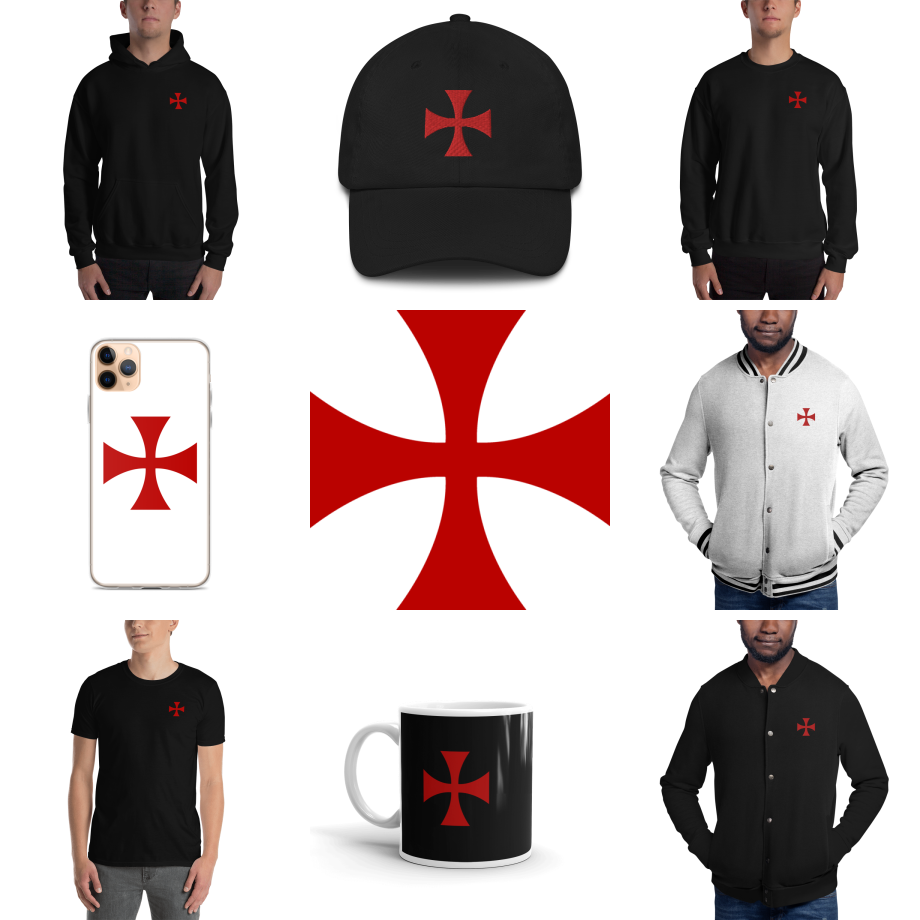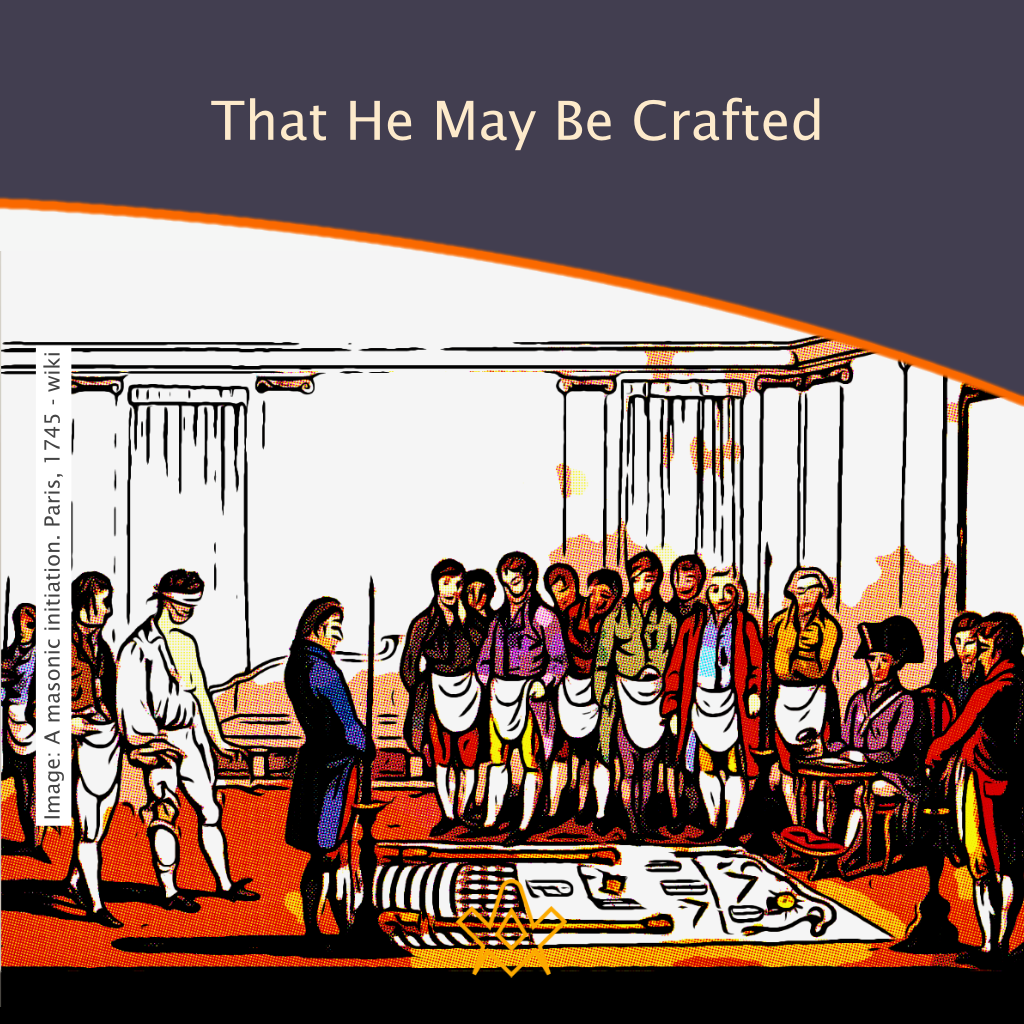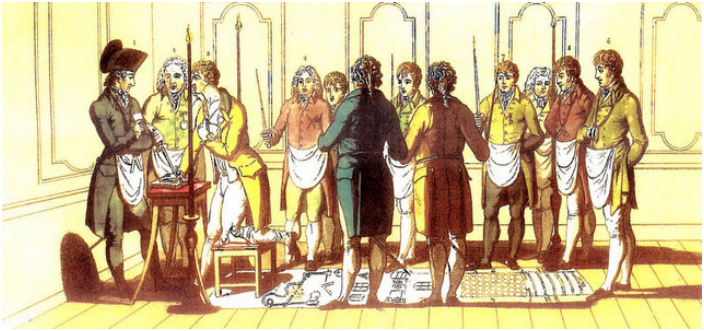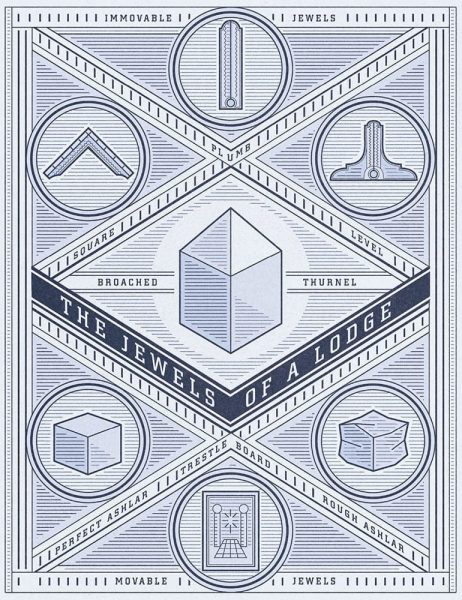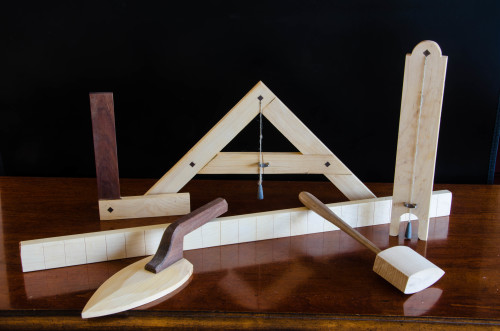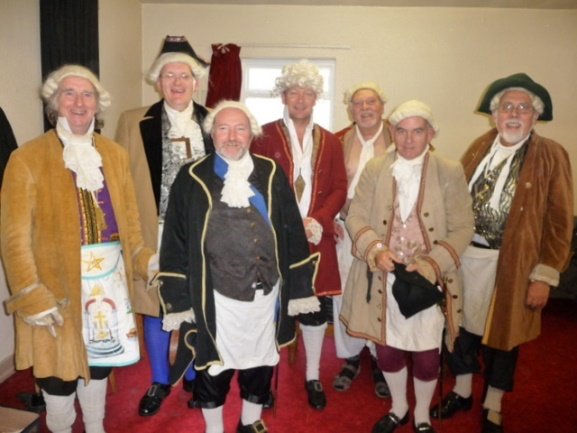Working tools are a perennial source of wonder and research being they are figurative and not operative in Craft Masonry.
However, going back to the mid 1800’s when there were only two degrees, Entered Apprentice and Fellow Craft, which had more relevance in simpler times.
IMAGE LINKED: wikimedia Attribution 4.0 International (CC BY 4.0)
First port of call the script (catechisms Q & As) of the ‘Lodge Night 1759’ Demonstration Team:
WM – J….N. then is the Mason’s Word. Greet you well Brother J.. Entered ‘Prentice’ Mason.
WM – Let him now stand to the Broached Thurnel that he may be crafted
WM – What then are the immovable Jewels?
JW – Trasel Board, Broached Thurnel and Rough Ashlar.
WM – And what are their uses ?
JW – Trasel Board for the Master to draw designs on.
Broached Thurnel for the Fellows to try their jewels on.
Rough Ashlar for the ‘Prentices to learn to work on.
WM – Me Brother Junior Warden, prithee explain the Principle of Masonry!
JW – Point – the centre round which the Master cannot err [apex of Broached Thurnel]
Line – Length – without breadth [Plumb Rule]
Superfices – Length and breadth [Square]
Solid – Comprehend the whole [Rough Ashlar]
IMAGE LINKED: California Freemason
BROACHED THURNEL (A cube surmounted by a pyramid) & ROUGH & PERFECT ASHLAR (Cubes) are templates to test angles.
The Broached Thurnel is shaped like a cube, but with a pyramid surmounting its top, rather like how a post-modernist anvil might look in a blacksmiths workshop. The sides of the pyramid incline at angles of 45 degrees inwards, to form a point at the zenith of the structure.
The FC’s ‘jewels’ were his pieces of work ready for inspection.
Looking further at other writers (Extracts) but limiting to the aforementioned pieces of equipment (Tools):
The apprentice takes the rough stone from the quarry and on it he uses the tools of preparation to achieve the Rough Ashlar. The craftsman takes the Rough Ashlar and under his skilful hand It becomes the Perfect Ashlar and is placed in the building according to the plan of the Master.
Each of us are the living stones, which are to form the Temple not made with hands, and so that the Temple may be perfect, each one of us has to be so, for the Temple will only be as good as the stones that form it.
Masonry is more than a ritual; it is a way of living. It offers us a method and a plan, by which we may build a character so strong and true that nothing, not even death, can destroy it.
If we act justly, love mercy and walk humbly before God, then we can serenely await the solemn moment when we must quit this transitory scene with a clear conscience and a trust in the mercy of God.
He is then ready for the Second Degree.
The tools of the Fellowcraft – the Square, Level and Plumb Rule. The Square, of course, is one of the most important tools in Freemasonry for, besides being the first working tool in the Second Degree, it is also the Second Great Light.
The true Level is the surface of a fluid at rest, and we shall find the true Freemason when we find a man who has passions and desires like our own, but who is master of his own soul, who can endure the worst calamities of misfortune and not become bitter, and who can meet the greatest good fortune and still keep his feet on the ground.
Men differ in nature, heredity, and opportunity, but above all, in the ability to make full use of their talents or to overcome their disabilities. We can all, however, do our best with what means we have, the greater a man’s wealth, or the greater his intelligence and ability, then the greater his responsibility. We must work with the full length of our cable tow.
So, Masonry teaches us equality of regard. On the floor of the Lodge all men are equal and brothers – equal in our regard, and brothers in the great brotherhood of man.
The Plumb Rule is the emblem of integrity, and with the man of integrity we can entertain no doubt.We know how he will act, and what he will do, because he stoops to nothing mean or petty, a debt of a few cents is just as sure to be paid as one of a thousand dollars; where his attendance is expected there he will be. The man of integrity is ruled by duty and loyalty and will never take an unfair advantage.
The Plumb Rule consists of a weight hanging freely at the end of a line; the principle that actuates it is the influence of gravity. No matter where it is placed, it always points to the centre of the earth. So it is in the spiritual world, but here it points unerringly to God.
Source: Kent Henderson http://www.freemasons-freemasonry.com/
THE WORKING TOOLS – QUATUOR CORONATI AQC LXXVIII (1965):
IMAGE LINKED: wikimedia Attribution 4.0 International (CC BY 4.0)
It is unnecessary to examine every aspect of Masonic ritual in order to understand the philosophical nature of its content.
The gist can be obtained by looking at the Explanation of the Working Tools, a key component in the three Masonic degree ceremonies, each of which use allegory to outline Freemasonry’s foundational principles.
The Explanation of the Working Tools of an Entered Apprentice references education as the pivot on which self-improvement turns.
A similar theme appears in and is reinforced in the second ‘Fellow Craft’ degree, where the candidate is encouraged to embrace education: to ‘contemplate the intellectual faculty and to trace it from its development, through the paths of heavenly science’.
And a similar theme occurs in the third, which iterates that ‘we apply these tools to our morals’ with the intention of attaining a ‘straight and undeviating line of conduct’.
In the first degree the Working Tool catechism begins with a statement concerning operative stonemasons’ tools. It takes place at the end of a ceremony which is concerned with the allegorical birth of the candidate as he enters Freemasonry:
A similar approach is taken in the second degree. This is concerned with how one should live one’s life: ‘with square conduct, level steps and upright intentions.
The Working Tools of a Fellowcraft are the square, the level and the plumb rule. The square is to try and adjust rectangular corners of buildings and assist in bringing rude matter into due form; the level to lay levels and prove horizontals; the plumb rule to try and adjust uprights while fixing them on their proper bases.
But as we are not all operative masons but rather free and accepted, or speculative, we apply these tools to our morals: the square teaches morality, the level equality and the plumb rule justness and uprightness of life and actions.
Once again, the meaning is clear: an enjoinment to embrace personal morality and egalitarianism, and to behave with justness and uprightness in one’s life and actions.
Clearly with the advent of a third degree the situation changed and required ’other’ tools to came into the equation with their figurative attributions. Some perhaps more sophisticated (as exampled by the skirret), but the many who like to ponder any fanciful claims back to Egyptian time may like to look at an image of what they commonly used. Usually premised as being ‘operatives’ in stonework in building their immense structures.
IMAGE CREDIT: Bromley and West Kent Masonic Study Circle
Reverting back, the aforementioned ‘Lodge Night 1759’ was a construct of the Bromley and West Kent Masonic Study Circle in 1956. Initially it was a one-off performance using that year in its title.
However, being re-booked again and again and flying under the banner of a compendium of Masonic Working 200 years prior the year was frozen in 1959. Thereafter the Team had great success over the next fifty-five plus years entertaining and education Masons of the practises of years gone by completing well over 400 performances in Britain and on the Continent.
Over that time many thousands of pounds were raised and attributed to charity. Sadly, by 2012, with declining interest and changing demands, especially time allotted to Masonic meetings and costs, the Team fell into slumber and became another ‘note’ in masonic history.
Fortunately the ‘Script’ lives on with several other Demonstration Teams Worldwide using it as a basis, often by agreement but others by happenstance!
Reflecting on the changing of Freemasonry as modernity and corporate management takes over with past simpler times of an ‘old boys club’ being long gone.
The organisation continues to make good men better through initiation and basic masonic tenets; now claiming its place in a more open and diverse society.
The olden, simpler times of two degrees, with their tools applied to morals are apocryphal and leave behind a time of yore when all that was needed was ‘…that He may be Crafted’, the point of the Broached Thurnel around which ‘the master cannot err’!
Article by: Paul Gardner

Paul was Initiated into the Vale of Beck Lodge No 6283 (UGLE) in the Province of West Kent, England serving virtually continuously in Office and occupying the WM Chair on three occasions.
Paul joined Stability Lodge No 217 in 1997 (UGLE) and now resides with Kent Lodge No 15, (UGLE) the oldest Atholl Lodge with continuous working since 1752, where he was Secretary and now Assistant Secretary and archivist, having been WM in 2002.
In Holy Royal Arch he is active in No 15 Chapter and Treasurer of No 1601, which was the first UGLE Universities Scheme Chapter in 2015.
He was Secretary of the Association of Atholl Lodges which maintains the heritage of the remaining 124 lodges holding ‘Antients’ Warrants and has written a book on Laurence Dermott. - https://antients.org
Recent Articles: by Paul Gardner
 Exchanged the Sceptre for the Trowel Explore the intriguing history of Royals and Freemasonry following the new Monarch's Coronation. From Prince Albert's initiation to the influence of George II and beyond, discover why royalty has long exchanged the sceptre for the trowel, shaping society and maintaining power through this ancient craft. |
 Unearth the mystic origins of Freemasonry in 'That He May Be Crafted.' Paul Gardner explores the symbolic use of working tools from the earliest days of this secret society, revealing a time when only two degrees existed. Delve into this fascinating study of historical rituals and their modern relevance. |
 Paul Gardner looks to a time when politics and Masonry were not precluded, but shush! This was London Masons and the Spitalfields Act of 1773-1865. |
 That rank is but the guinea’s stamp, the man himself’s the gold. But what does this mean, even given the lyric and tone of Burns’ time? It is oft times used in a derogatory sense, (somewhat in good humour) between Masons (or not) on the achieving of honours. But its antecedents are much more complex than that. |
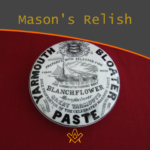 John and Timothy Coleman Blanchflower were initiated in Walpole Lodge, No. 1500, Norwich England on 2 December 1875; noted as a purveyor of ‘sauce’ to masons! |
 Jacob’s Ladder occupies a conspicuous place among the symbols of Freemasonry being on the First Degree Tracing Board, the most conspicuous and first seen by the candidate on his initiation – a vision of beauty and intrigue for the newly admitted. |
 During a detective hunt for the owner of a Masonic jewel, Paul Gardner discovered the extraordinary life of a true eccentric: Dr William Price, a Son of Wales, and a pioneer of cremation in Great Britain. Article by Paul Gardner |
 Paul Gardner tells the story of his transition from one rule book to another – from the Book of Constitutions to the Rule Book for Snooker! |
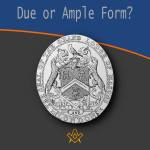 Due or Ample Form? What is ‘Ample’ form, when in lodges the term ‘Due’ form is used? |
 The Butcher, the Baker, the Candlestick Maker Paul Gardner explores the Masonic link between provincial towns’ craftsmen, shop keepers and traders in times past. Many remain in the modern era and are still to be found on the high street. |
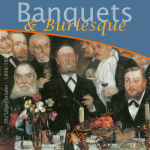 Masonic dining and banquets, at least for the annual Investitures, were lavish, and Kent Lodge No. 15, the oldest Atholl lodge with continuous working from 1752, was no exception. |
 The ‘cable-tow’ or ‘noose’ is used in Craft Masonry as part of the ritual, as are ropes and ties in other degrees - but what does it symbolise? |
 Paul Gardner reflects on those days of yore and the “gentleman footballer” in Masonry |
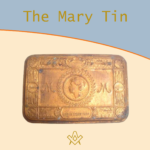 What is the Masonic connection with the 1914 Christmas Mary Tin |
 That Takes the Biscuit - The Patriot Garibaldi Giuseppe Garibaldi Italian general and politician Freemason and the Grand Master of the Grand Orient of Italy. |
 W.Bro. Paul Gardner looks at a mid 19th century artefact and ponders ‘Chairing’ |
masonic knowledge
to be a better citizen of the world
share the square with two brothers

click image to open email app on mobile device
